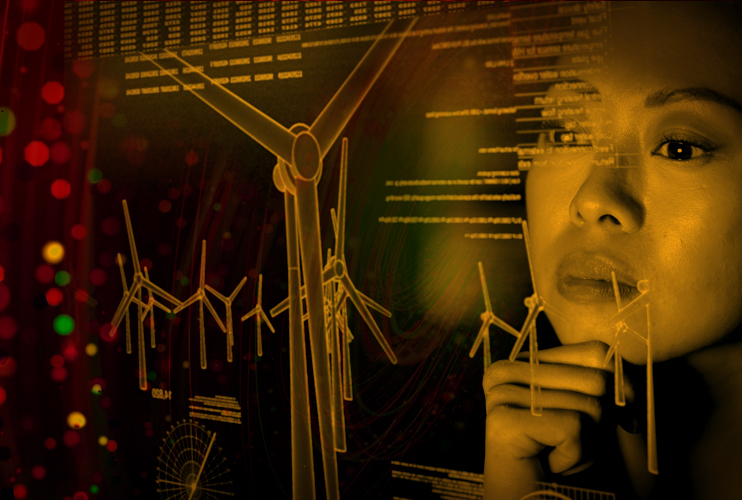The wind farm you design today will likely be repowered long before it’s decommissioned.
More than 14 GW of U.S. wind power has already gone through repowering, and analysts expect roughly another 16 GW by 2026. The first generation of modern projects shows a clear pattern: sites planned with repowering in mind upgrade smoothly and economically; those that weren’t often face crippling costs or constraints that make upgrades impractical.
The difference lies in design decisions made a decade earlier—foundation sizing, road width, crane-pad layout, and collection-system capacity. Small, “reasonable” choices at the time can become big obstacles later.
Your turbine model is temporary. Your infrastructure choices are not. Design the permanent elements to outlive the hardware they support.
Why Repowering Happens
Under IRS Notice 2016-31 and related guidance, a repowered facility can qualify for a new 10-year Production Tax Credit if at least 80 percent of the facility’s value is new. That policy—combined with turbine advances—drives most repower decisions around years 10 to 12 instead of the original 20 to 25.
Modern machines typically deliver about 20–30 percent more energy than mid-2010s turbines and can extend project life by up to 20 years (EIA). Operating costs drop, warranties reset, and parts availability improves.
Existing sites carry real value: established grid interconnections, proven wind data, landowner relationships, and permits. Securing new interconnections now can take five years or more, so the ability to reuse existing infrastructure is often worth more than new greenfield development—if the site can physically handle larger equipment.
Two Paths to Repower
Full repowering replaces towers and foundations entirely. It offers maximum performance gain, a full PTC reset, and fresh warranties—but also major cost and permitting implications.
Partial repowering upgrades nacelles, rotors, and blades while reusing towers and foundations. It’s faster, cheaper, and less disruptive—but only feasible when the existing civil and electrical works can handle new loads. Modern turbines are taller and heavier; foundation stresses and crane requirements change dramatically.
Projects that overbuilt foundations or documented them thoroughly tend to qualify for partial repower. Those that didn’t usually can’t.
Foundations: Build Once, Use Twice
Most foundations are designed to meet the minimum structural load for the original turbine plus a safety margin. Fifteen years later, that margin can vanish.
Smart developers design with headroom—extra bearing and overturning capacity, well-documented concrete and rebar specs, and standardized layouts across the site. The cost increase is modest compared with the risk of complete replacement later. When foundations fail to meet new load requirements, full excavation and rebuild can erase millions in value and schedule.
Documentation is equally vital. Future engineers rely on detailed as-built drawings, geotech reports, and test data. Missing records force conservative assumptions or costly re-testing. Capture and store everything—mix designs, soil logs, load tests, rebar maps—so the next generation doesn’t start from scratch.
Access Roads and Crane Pads
Turbine components have grown dramatically since 2015. Blades over 200 feet long and heavier tower sections demand larger transporters and cranes. Roads that once sufficed for construction may not support multi-month repower campaigns.
Many projects used 14- to 16-foot travelways; today’s hauls and cranes often need wider sections and broader turning radii. Where possible, design roads for heavier axle loads, improved drainage, and long-term durability. The incremental cost is small compared to rebuilding them later under environmental or topographic constraints.
Crane-pad requirements also scale with equipment. Rather than prescribing a fixed footprint, design per OEM and lift-plan specifications, allowing for higher bearing pressures and multiple approach angles. Pads that can support larger cranes won’t need reconstruction when turbines grow.
Electrical and Layout Flexibility
Oversize electrical infrastructure slightly—cables, transformers, and substations—so the system can handle higher capacities or new layouts later. Include spare conduits and maintain clear access for grounding and lightning upgrades. “Right-sizing” to the current turbine often becomes “under-sizing” at repower.
Modern array design favors flexibility. Typical spacing guidelines are roughly 7–10 rotor diameters downwind and 3–5 crosswind, adjusted for terrain and wake effects. Generous spacing allows future turbines with larger rotors or fewer, higher-capacity machines without re-permitting layout changes.
Contracts and Permits
Land leases should explicitly allow equipment replacement and include processes for adjusting turbine locations, heights, and compensation. Extend terms to match a potential 30- to 40-year project life.
Permits and environmental approvals should define turbine ranges (height, rotor diameter) rather than fixed models. That flexibility prevents re-permitting when technology evolves.
Interconnection and power-purchase agreements must anticipate upgrades—preserving rights to modify collection systems or capacity without triggering new queue studies or contract resets.
Documentation and Knowledge Retention
Repower success depends on records. Maintain geotechnical data, rebar layouts, concrete specs, cable routes, and operational histories. Archive design rationales and permit conditions. Staff turnover erodes institutional memory; a clear project history keeps future teams from rediscovering why a decision was made.
Financial Modeling and Emerging Trends
Lifecycle models that include repower scenarios demonstrate how modest upfront premiums yield outsized long-term value. Factor in reuse potential, output gains, and a possible new PTC period. Investors increasingly recognize that repower-ready assets command premiums in secondary markets.
Hybridization is rising across renewables. While most pairing today occurs with solar + storage, wind developers should at least reserve land and routing for batteries. Future-ready design keeps options open for storage, recyclable blades, or other technologies not yet commercial.
Conclusion
Nearly every project built today will face a repower decision within 10–15 years. The early design choices—foundations, roads, electrical headroom, documentation—determine whether that future is opportunity or ordeal.
A modest upfront investment can prevent massive costs later. Repower-ready design isn’t overspending; it’s risk management and asset protection.
At North Coast Enterprise, we’ve seen this cycle before: decommissioning shifted from afterthought to requirement, and repowering is following the same arc. Build once, use twice. Design for the next upgrade now—before it becomes your next emergency.


